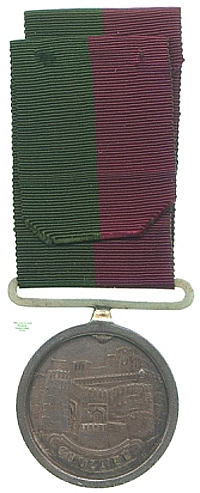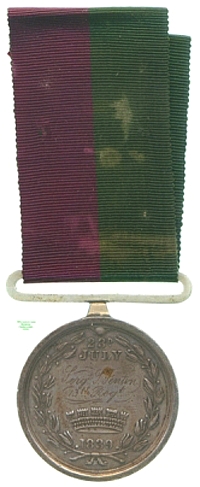
Obverse, a depiction of the fortress of Ghazni

Reverse, a mural crown, with laurel branches around

Obverse, a depiction of the fortress of Ghazni |

Reverse, a mural crown, with laurel branches around |
The First Afghan War was brought about, against a background of British desire to control this troublesome area on the Indian North-West Frontier, by the campaign of the exiled Shah Shujah al-Mulk, to oust his brother Mahmud from the Afghan throne (something which he had done in 1803 in order to succeed in the first place).
After an unsuccessful attempt in 1833 backed by the ruler of the Punjab, Shujah managed to add British support for a campaign of 1839 and was thereby restored, although he was assassinated almost as soon as the British left the country, provoking a return to conflict for which other medals were awarded.
The most difficult part of the campaign was the capture of the fortress in the mountain pass of Ghazni, and for participation in this battle Shah Shujah had a medal struck at Calcutta. He was dead before it could be issued, but Queen Victoria and the East India Company allowed it to be awarded through the usual channels anyway.
This example was awarded to Sergeant S. Fenton of the 13th Regiment. Lester Watson purchased it at some point before 1928.